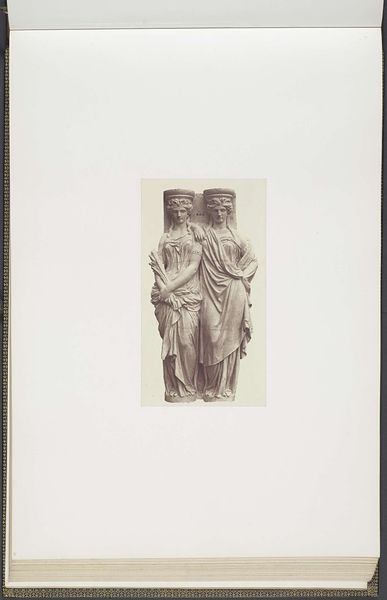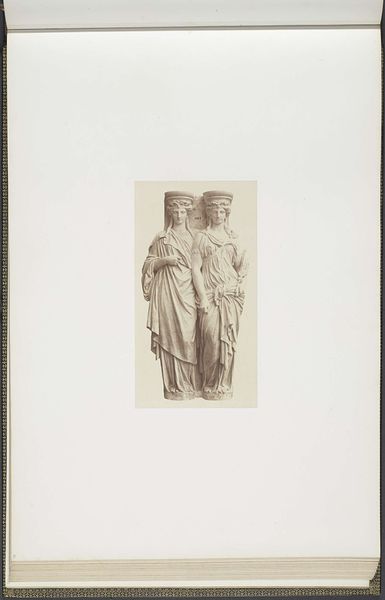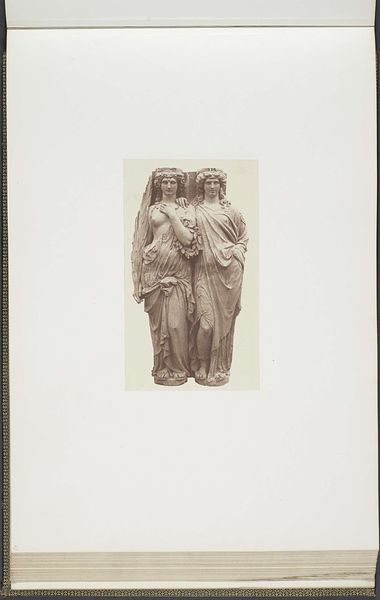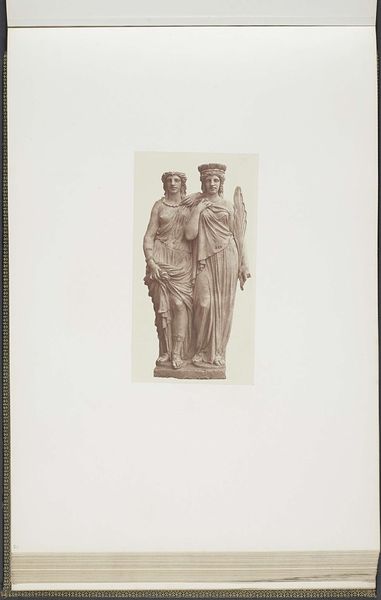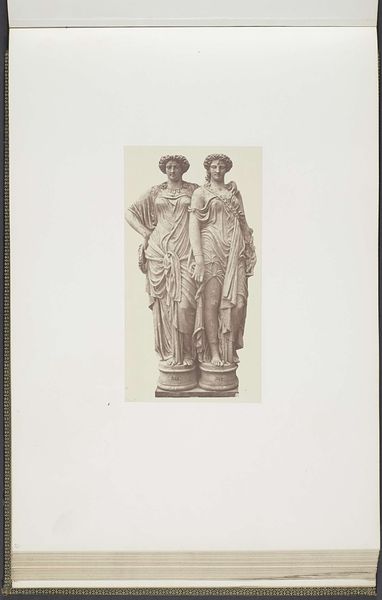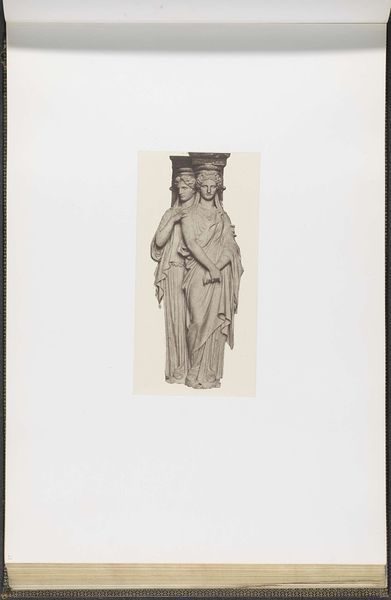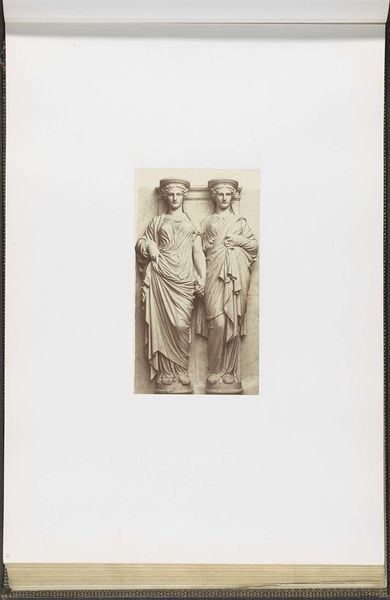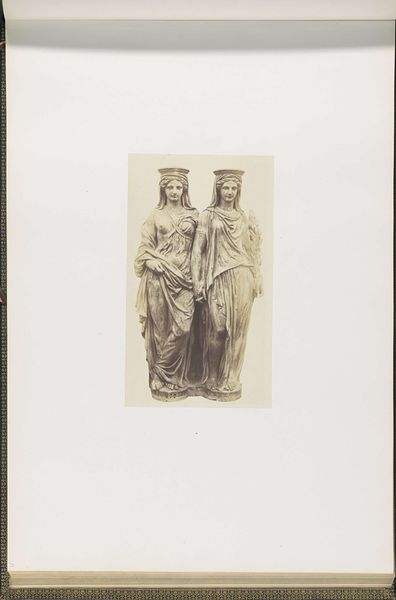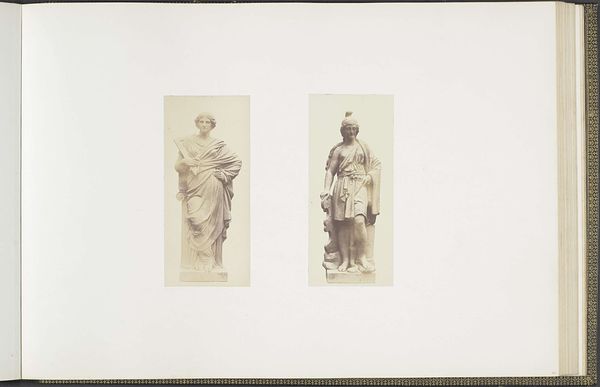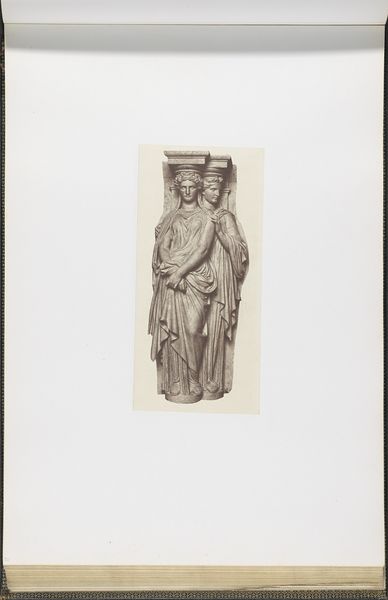
Gipsmodellen voor kariatiden op het Palais du Louvre door Jules Cavelier c. 1855 - 1857
0:00
0:00
edouardbaldus
Rijksmuseum
photography, sculpture, gelatin-silver-print
#
portrait
#
classical-realism
#
photography
#
ancient-mediterranean
#
sculpture
#
gelatin-silver-print
#
academic-art
Dimensions: height 378 mm, width 556 mm
Copyright: Rijks Museum: Open Domain
Editor: So this gelatin-silver print from around 1855-1857 by Edouard Baldus shows plaster models by Jules Cavelier, destined to be caryatids at the Louvre. The photo itself is quite striking, with a very neutral color palette and an imposing depiction of the figures. What grabs your attention when you look at it? Curator: The first thing that strikes me is the balanced composition. Baldus has captured the texture and form of Cavelier's plaster models with remarkable clarity. Note the skillful rendering of light and shadow, which serves to accentuate the drapery and anatomical details. Consider the deliberate parallelism in the figures and the backdrop, further unifying the composition. Editor: It is so interesting how much texture is preserved, despite this being a photographic print. Are there particular formal elements that reinforce a sense of "ancient" style? Curator: Precisely. Baldus doesn't just document the models; he emphasizes their inherent classical qualities through photographic techniques. The symmetrical arrangement and static poses clearly echo classical sculpture. Observe how the figures are positioned within a shallow depth of field, reminiscent of classical friezes. This reinforces a sense of timelessness and elevation. Is this merely documentation or interpretation? Editor: It's definitely elevated by Baldus' choices. What I am really learning is that his vision gives more dimension to the figures. Thanks for illuminating this for me! Curator: The beauty is indeed in how Baldus employs light and shadow to further amplify the intrinsic, classically-inspired forms in Cavelier's sculpture, producing not merely documentation, but a visual discourse. A lesson for us all.
Comments
No comments
Be the first to comment and join the conversation on the ultimate creative platform.
